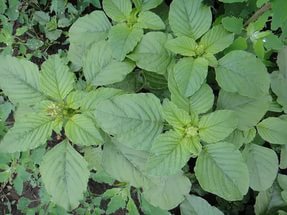Content
Having noticed on the site weeds, most gardeners try to get rid of them right away. But a wise owner will find benefit in everything. Especially if the site is new and you do not know the composition or acidity of its soil. In this case, weeds will help. Determine soil acidity by weeds quite realistic and affordable. It turns out that each weed prefers its own soil.
Some plants thrive in acidic soils, while others do well in alkaline soils. Therefore, by observing the variety of weeds on the site, you can do without special methods for determining its acidity.
It is important to note that with the help of weeds, fertility, humidity, groundwater levels, mineral composition and soil density are determined. Common weeds growing on the site turn out to be very useful plants for experienced gardeners. They serve as indicators of many parameters of your soil.
Many summer residents do not pay due attention to determining the properties and quality characteristics of the soil. In general, the matter rarely reaches the laboratory. But it will not be possible to grow a good harvest without taking into account important indicators. After all, the health and well-being of planted plants directly depends on the acid-base balance of the soil.
Why does an ordinary summer resident need to know methods for determining soil acidity? It is necessary to know the pH indicator; it signals the behavior of individual nutrients in the soil. At certain values, they simply precipitate or turn into forms that are not digestible for cultivated plants.
Their protein and carbohydrate metabolism is disrupted, which leads to withering of plants and loss of a significant part of the harvest. Therefore, you will have to take measures to alkalize, but at the same time you need to be able to properly handle the soil. Otherwise there will be more harm than good. When adding mineral fertilizers to acidic soil (they are also acidic), you will get a very short-term effect. And then the plants will experience even greater oppression. But organic matter is more useful for acidic soil than liming. Knowing the degree of acidity of the soil, you can accurately calculate the dose of mineral fertilizers.
It is not always possible to use modern methods of studying dacha soil. Many summer residents know how to determine soil acidity by looking at weeds. To do this, you just need to take a closer look at the plants that grow well on the site without human intervention.
The grass stand is also influenced by other characteristics of the land, its fertility, humidity, and mineral composition. In addition, in one area in different zones, the acidity of the soil can differ significantly.
Types of weeds to determine soil acidity
Most often, summer residents are interested in the ability to determine acidic soil. Many plants grow poorly in acidic soil. Therefore, there is no need to expect a good harvest or lush flowering.
If the soil on the site is acidic, how can you identify weeds, photos of which can be found in any reference book? What weeds will tell you that your site has soil with high acidity? Let's start with the names and photos of the most common herbs.
Field navel grows on very acidic soils,
crowberry, blueberry,
Erica, sour sorrel, white sorrel, meadow marianberry.
Baltic sphagnum grows on soil with average acidity,
knotweed, mint,
lingonberries, wild rosemary,
bear's ear, oxalis.
Slightly acidic soil can be recognized by the presence of sedge (hairy and early),
male rosehip, oak anemone and buttercup,
forest woodland, nettle-leaved and broad-leaved bellflower, creeping wheatgrass,
coltsfoot,
sweet clover
Sorrel, tricolor violet, horsetail, etc. love acidic soil.
plantain,
rough knotweed. You need to know that isolated or very sparsely growing weeds are not considered indicators. Only the predominance of the named plants on the site can be called a signal about the degree of acidity of the earth.
The alkaline soil is rich in bindweed and poppies.
Useful tips
Many crops have good adaptability to fluctuations in pH. Therefore, in different sources you can find directly opposite information about indicator weeds. In addition, it is very rare that crops are complete adherents of one soil type. But if you don’t take its “tastes” into account at all, you can even destroy a useful plant. Why? In soil with a high level of acidity, nitrogen nutrition is disrupted and the plant does not receive sufficient amounts of magnesium, calcium and phosphorus. But it does contain toxic compounds.Another destructive factor for cultivated species is the rapid development of pathogenic microorganisms in an acidic environment.
How to reduce the level of soil acidity on a site without negative consequences
Deoxidize it with natural materials. Deoxidize the soil with lime, dolomite flour, chalk, lime flour. Wood ash works well. Its action is much softer, but no less effective.
Therefore, deoxidation is carried out annually and regularly. As soon as you notice problems with plant growth and development, immediately check the acidity level.
Everything helps an experienced gardener. Therefore, take a closer look at the plants in your area. They can tell you a lot of useful things.






















